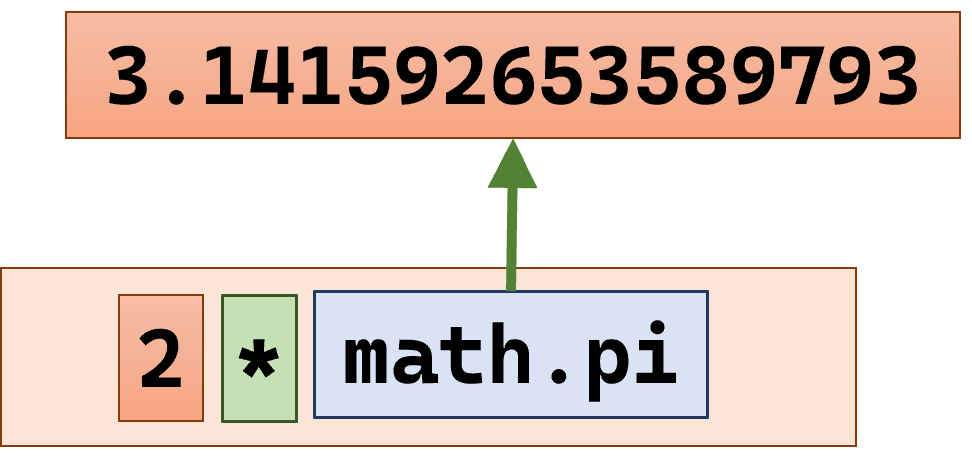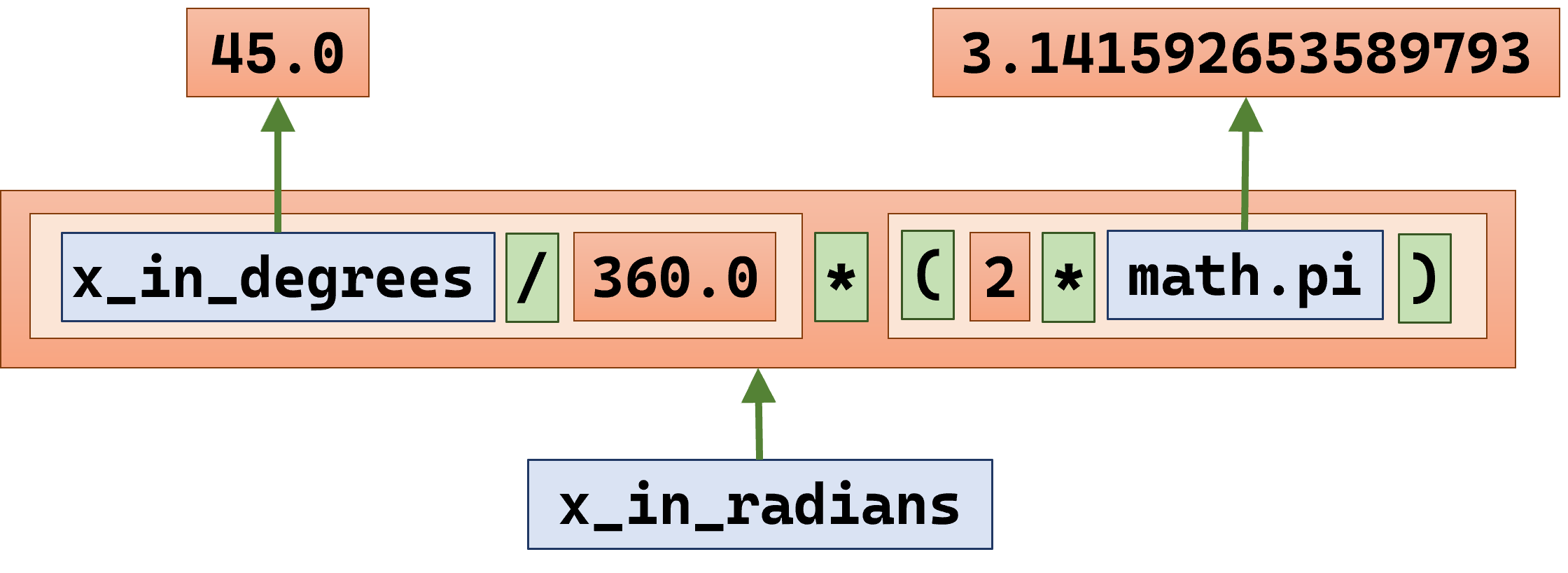Lesson 3
Discovering your Paths
Chapter 8: Composition and abstraction
Composition in expressions
Let’s take a break from trying to code, and step back a bit and review the bigger picture of how programs are formed.
Back in Lesson 1, I assembled basic building blocks to form a program.

If you remember, I described this process as composition. Intuitively, you can use a block inside another block to achieve a larger goal.
Composition is not limited to only these building blocks. It also happens among the smaller components of programs.
Take for example literals. You can combine them with operators to form expressions (which are also objects).
2 * 3.141592653589793

Of course, you can also compose variables. The advantage is that this gives your component a semantically meaningful name, which makes it easier to understand what it represents.
2 * math.pi

You can then further combine more expressions to form more complex expressions (which are still objects)
x_in_degrees / 360.0 * (2 * math.pi)

Of course, you can give these composite expressions a name to indicate what it represents at a higher level.
x_in_radians = x_in_degrees / 360.0 * (2 * math.pi)

